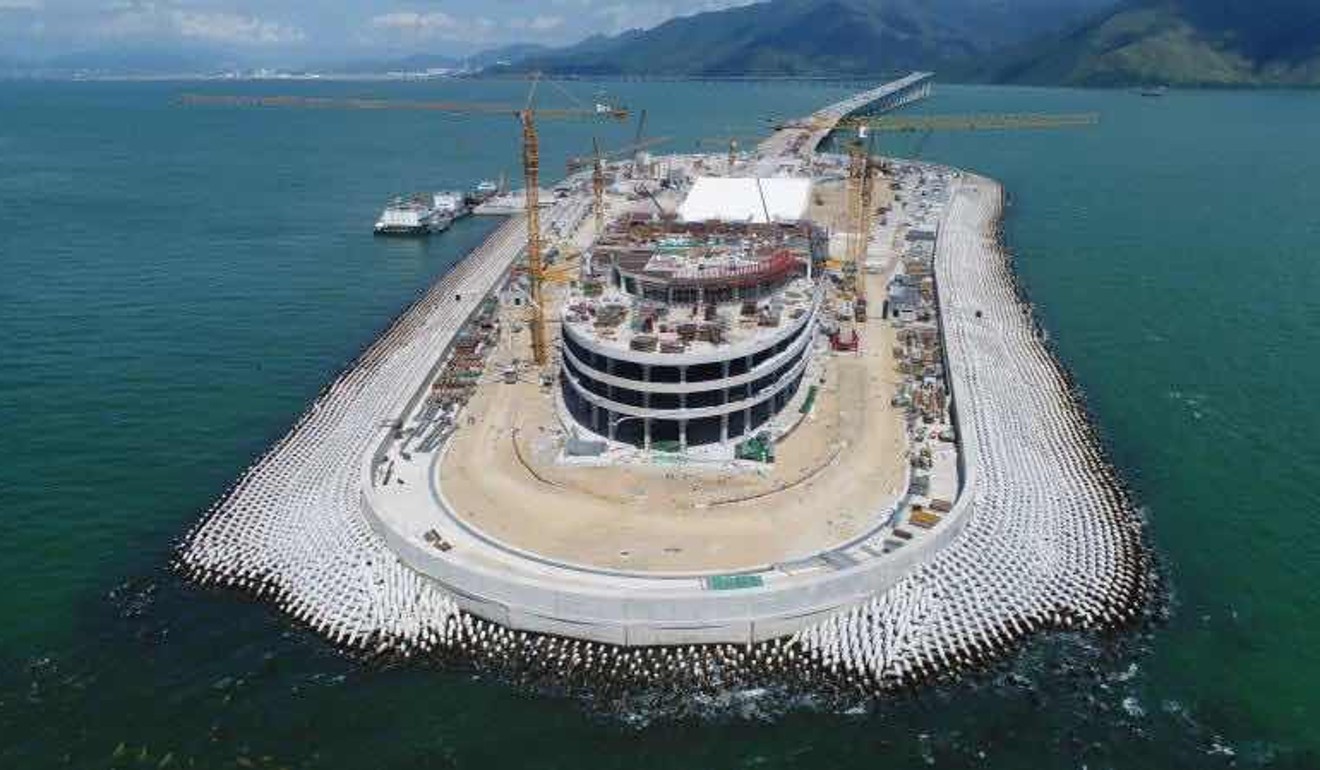
Fresh bid to allay safety concerns over Hong Kong-Zhuhai-Macau bridge, with senior official saying ‘we do things our way’
Bridge authority also releases images showing placement of concrete blocks in artificial island’s breakwater when it was first completed, as well as photos taken before and after Typhoon Hato
A senior official at the mainland Chinese authority managing the multibillion-dollar bridge that links Hong Kong, Zhuhai and Macau has reiterated that there are no safety issues with the cross-border infrastructure project, saying “we build things our way”.
Chung will meet the press on Monday to disclose his findings from the visit to the Hong Kong-Zhuhai-Macau Bridge Authority, a Highways Department spokesman said.

Aerial photographs of the eastern artificial island last week showed a jagged shoreline with some dolosse at one end separated from the structure, which was built by the Chinese side, and is managed by the authority.
The authority has since released at least two press statements to clarify the issue, but has been unable to fully assuage concerns in Hong Kong.
The first authority official to speak publically since the story broke, deputy director Yu Lie, said on Sunday the concrete blocks had not drifted and were placed in such a way to get the best results.
“It is a special location and we cannot place [the blocks] regularly in the usual manner above the water,” Yu said. “The placement of the blocks under the water was by design and they were interlocked to perform the function of protecting the man-made island. That has been the design.”
“We have our ways to do it, and you [Hong Kong] may have your ways to do it. You seem to presume that part of the structure had sunk, had collapsed. But this has been designed as such. We do not think there is any problem with that. There are rules and standards for us to follow.”
He also rejected claims of a cover-up, saying the governments of the three places were represented on the authority, and monthly meetings were held for the sides to discuss the project’s progress.
Hong Kong-Zhuhai-Macau bridge ‘scientifically proven to be safe’, Carrie Lam says
A Highways Department spokesman confirmed only that Chung had visited Zhuhai to meet the authority, but would not give further details.
“[The breakwater’s] protective functions experienced Typhoon Hato’s test,” the authority’s release said.
However, Hong Kong engineer Albert Lai Kwong-tak, who is also convenor of the Professional Commons think tank, urged the authority to make public the documents of the bridge design.
“Few can be convinced by just some casual claims by [Yu],” Lai said.
“I am not saying that it is a bad design. But please explain to the public why it is good and how good it is. At present, we can hardly make an informed assessment when not all data is made available.
“Maybe there were other designs that they had studied but they had opted not to adopt them in the end and chose the present one.”
Lai added: “That it survived Hato does not necessarily mean that it is the best design. No one would expect it to collapse after a typhoon.”
He also said the placement of concrete blocks in such a manner could increase maintenance and repair costs for the island.
“They will need to monitor and repair the breakwater constantly,” Lai said.
Hong Kong has so far committed to contributing about HK$10.7 billion (US$1.38 billion), or 43 per cent, of the main bridge’s construction cost. However, local officials will also end up spending another HK$110 billion to build the city’s connection to the main bridge.


